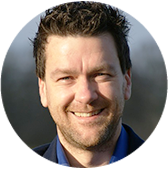Neurofeedback is a method of studying the electrical activity of the brain in a way that reveals information about a patient’s mental state, cognitive challenges, and other feedback. With neurofeedback, you not only gain insight into how your brain learns, but you can also learn new patterns of thinking to optimize attention, memory, and executive functioning skills. When coupled with therapy, you can also reduce the prevalence of conditions such as anxiety, stress, sensory problems, depression, and learning and behavioral disorders.
The treatment is simple- you simply place a series of non-invasive electrodes onto your ears and scalp. As the equipment reads your electrical signals in real-time, it displays a visual interpretation of them on a computer screen for a neurofeedback specialist to translate.
The way our brain works can be a mystery without a visual understanding of what brain waves look like and do. Neurofeedback technology means specialists can treat disorders by precisely measuring and visualizing cognitive processes. At NeuroZone, we offer the latest and most accurate neurofeedback system to get our patients to form the better, stronger brains they need to succeed in their professional and personal lives.
To book an appointment call (310) 821-3640 to reach our Santa Monica or Playa Del Rey location, or call (424) 247-8193 for our Redondo Beach location. You can also inquire online, and we will be happy to help you achieve your goals with a personalized treatment plan. We offer free consultations for all interested patients!
NeuroZone is headed by Erin Badour, B.A., BSC., M.S CCC-SLP, BCN a speech pathologist and neurofeedback specialist with extensive experience in communication and developmental disorders. With her knowledge, neurofeedback training and diagnostic tests can become a comprehensive way for you to transform into the most capable and resilient version of yourself.
The QEEG Brain Map
At NeuroZone, our neurofeedback specialists are trained to interpret qEEG brain mapping. QEEG stands for qualitative electroencephalogram, and is the primary neurofeedback device we use to get a baseline understanding of where someone is at in terms of brainwave activity. During the mapping process, the system will display your brainwaves on the software program’s computer screen:
- Beta waves indicate your brain is in deep concentration.
- Alpha waves are the most common waves that indicate a more relaxed state as the brain veers away from an alert, concentrated state.
- Theta waves occur during daydreaming and certain meditative states.
- Delta waves are the slowest brain waves associated with deep sleep.
- Gamma waves are the fastest brain waves associated with spontaneous creativity, effortless insight, and high-level processing.
Reading these electrical waves is just the first step in a multifaceted evaluation you can undergo at NeuroZone. These brainwaves are strong indicators of how you think and process emotions, language, and many other functions. After your first brain mapping session, we can then speak with you to discuss any issues you may have concerning your mental health or cognitive abilities. We can help you get to the root source of your condition, allowing you to reap long-lasting benefits from neurofeedback, not just mask symptoms. With the help of regular sessions, your specialist can design a personalized action plan that will allow you to find relief from:
Your Brain Training Treatment Plan
While neurofeedback can work for a variety of disorders and communication delays, your customized training will consist of a consistent series of neurofeedback sessions. Each session takes roughly 30 to 45 minutes, and you will need to be fully engaged for each one. Depending on your goals, you will require a different form of therapy guided by the input of these sessions and the results you would like to achieve. Your specialist can implement one or more of the following:
- Neurofeedback training with audio/visual/sensory stimuli – This tends to be most appropriate for those with PTSD, moderately reducing complex symptoms that many other therapies fail to treat. (1) This form of neurofeedback also includes therapies designed to minimize sensory hypersensitivity. Tones, colors, and other visualizations can work as a means of positive reinforcement to retrain the brain to exhibit optimal brain electrical activity that supports patients’ cognitive goals. NeuroZone refers to this kind of treatment as entrainment.
- Alpha-theta training – This approach involves guiding the patient toward achieving a relaxed, meditative state with gentle breathing exercises, soothing sounds, and visualizations.
- Attention training – This approach offers positive reinforcement when attention is sustained, offering a solution for those who struggle with ADHD or ADD. Brain maps can identify hyperarousal (which is often expressed as hyperactivity) in the subcortical areas of the brain, the deeper structures. Studies find that neurofeedback can help patients maintain better control over their hyperactivity and impulsivity for up to 2 years. (2)
- Meditative neurofeedback – This type of therapy involves the use of virtual reality to immerse patients in a brand-new setting that engages them in a soothing and natural environment.
- Speech and language training – Patients with speech and language challenges can undergo a specialized program to better engage these areas of the brain. Those with learning and behavioral disorders can attain great progress with one of NeuroZone’s language-specific protocols which includes: Fast Forward programs, Lindamood Bell programs, Laureate Learning System programs, Question Quest programs, and the iLs programs. Going through one of these programs can give specialists insight into which parts of the brain are underactive or underdeveloped and address them with the most appropriate course of action.
More Neurofeedback Customizations
While taking into account these approaches, your neurofeedback specialist will also make other minor adjustments to your sessions depending on what your qEEG results indicate. For example, if one area of your brain displays high levels of activity, your specialist may move the electrodes on your qEEG cap closer to that area to get a more accurate reading. Sometimes, only one electrode lead is required, while other patients may require four or five of them for the best reading. They will closely monitor your brainwaves and how your brain responds to different stimuli to ensure they are implementing the right form of therapy and stimulation.
Whether your goals are to achieve a calmer state of mind, deeper focus, or increase your attention span, your specialist will be proactive in making any necessary changes to give you a high-quality experience. Finally, the duration of your feedback may be altered; some patients only require short sessions, while others may need longer sessions to reach a certain mental state.
Candidates
Neurofeedback brain mapping and training are 100% geared toward your desires. This form of therapy is a completely drug-free approach that builds more cognitive resilience and awareness of how your mind and body work together. Because it is so versatile, it is effective and appropriate for patients 2 years of age and over. You don’t need to have a diagnosed disorder; you simply need to have a committed attitude toward getting the results you want. As long as you can sit relatively still and are willing to dedicate multiple sessions to your treatment plan, neurofeedback can be a great fit for you.
For entrainment and other types of audio/visual therapies, some patients may not be suitable. This includes those with a history of seizures, brain injuries, and certain psychiatric disorders. These individuals may be more sensitive to the stimulation and have a negative reaction.
Personal Consultation
During your personal consultation at NeuroZone, we will aim to get the full picture of the conditions you would like to address with the help of neurofeedback. Your first brain-mapping session will give us a valuable starting point that will help us formulate the best therapeutic recommendations. We may conduct an attention assessment or an executive function assessment if necessary. We will ask you about the specific improvement you would like to see by the end of your treatment, like, for example, better focus at work, improved planning skills, or anxiety coping skills.
Cost of Neurofeedback Training in Santa Monica
The cost of your neurofeedback sessions will depend on your individualized plan and the duration of your care. Our specialists recommend several sessions to uncover the incredible results with neurofeedback-based therapy and training; just read our reviews to take a look for yourself. At NeuroZone, we can help build an amazing life by harnessing your mind’s abilities and promoting brainwave adaptations that allow you to learn and succeed.
To get started building a better, stronger brain, call us at (310) 821-3640 for our Playa Del Rey or Santa Monica, CA offices, or call (424) 247-8193 if you are closer to our Redondo Beach location. You can also request your free consultation with our contact form, and we will get back to you as soon as we can. If you’d like to find out more in-depth details on our revolutionary approaches to therapy, read through our blog.
FAQ
How many neurofeedback sessions will I need?
Depending on your type of therapy, patients can expect to go through at least 15 to 20 sessions with their chosen therapy and evaluation with neurofeedback brain mapping. However, some treatment plans may include up to 50 sessions.
Are there any negative effects of neurofeedback?
Neurofeedback is a natural way of monitoring and optimizing brain function without the risks and side effects of medications. Those with mental health conditions such as anxiety, depression, and PTSD can find relief without the worry of medication dosages and their effects on the brain.
When can I expect to see the results of neurofeedback?
Neurofeedback training and therapy could take longer for some, but most patients begin to notice results in as few as 5 to 10 sessions.
References
- Mirjana Askovic, Soh N, Elhindi J, Harris A. Neurofeedback for post-traumatic stress disorder: systematic review and meta-analysis of clinical and neurophysiological outcomes. European Journal of Psychotraumatology. 2023;14(2). doi:https://doi.org/10.1080/20008066.2023.2257435
- Van Doren J, Arns M, Heinrich H, Vollebregt MA, Strehl U, K. Loo S. Sustained effects of neurofeedback in ADHD: a systematic review and meta-analysis. European Child & Adolescent Psychiatry. 2018;28(3):293-305. doi:https://doi.org/10.1007/s00787-018-1121-4





